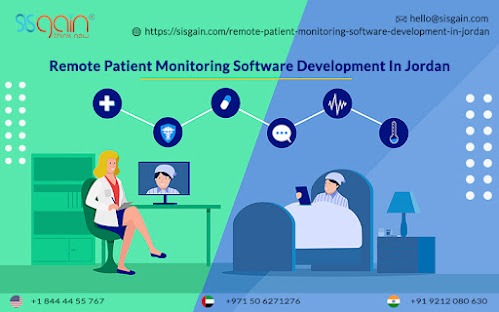Installing Remote Patient Monitoring Software Development in Jordan
Nonadherence is responsible for up to 50% of treatment failures in Jordan. Although an adherence rate of at least 80% to chronic drugs is required for maximum treatment efficacy, it typically falls between 50% and 60%.
According to the WHO, only 51% of hypertension patients in affluent nations follow the suggested treatment plan. Only 43% of asthma patients in Amman take their medications as prescribed by their doctors.
The COVID-19 epidemic has altered people's perceptions about traditional healthcare. According to a survey performed by the SISGAIN, 41 percent of Jordan customers decided to postpone healthcare services, 42 percent said they were uncomfortable visiting a hospital, and 38 percent said they planned to postpone forthcoming treatment due to coronavirus. Even though 58 percent of participants regarded their doctors as the most reliable source of information about COVID-19, only 31% felt at ease during in-person visits.
SISGIAN develops Remote patient monitoring software development in Jordan that uses IoT technologies to help with the concerns mentioned above, at least in part. RPM systems track medication adherence, highlight potential dangers, and manage prescriptions by gathering real-time patient data such as heart rate, blood sugar level, oxygen saturation, and arterial pressure, and transferring it to the system utilized by healthcare practitioners. Medical institutions will be able to enhance the quality of healthcare and system effectiveness during the pandemic in this way. Despite this, massive amounts of telemetry data, as well as legalities, privacy, and integration concerns make this a difficult undertaking.
The Essential Parts of a Remote Patient Monitoring System
Healthcare institutions and individuals must use the attached devices, such as interconnected devices and sensors, to guarantee patient care management (RHM) outside of clinics (e.g., wearables). With the growth of the Internet of Things in healthcare, glucose meters, smart inhalers, heart rate monitors, and other similar devices are becoming more popular.
Devices and sensors collect patient files and transmit them to a cloud-based system for further assessment by healthcare specialists. Patients frequently use mobile apps to exchange data and connect with doctors, while professionals use dashboards for data visualization and prescription administration. A smartphone app can also notify users to take their medications, which can help with adherence.
Here are some of the essential components of a remote patient monitoring software in Amman:
The gathering of information- Sensors and smart gadgets can be used by medical institutions to track the number of health indices (Data is collected "on the edge" and then transferred to a web-based system for management and retrieval.
Cloud storage- It is a method of storing data on the cloud A remote patient monitoring system must use scalable data storage capable of processing hundreds or perhaps millions of queries per second to capture enormous ever-changing—arrays of data.
Processing of data- A software platform must gather and analyze data from many sources to provide a real-time picture of a patient's health status, as well as notify clinicians and patients about possible problems. Physicians will be able to track several health indicators (such as heart rate and blood glucose level) as well as discover and analyze hazards in this manner.
Dashboards- Dashboards can be used by healthcare organizations to help clinicians track treatment plans, manage prescriptions, examine electronic health records (EHR), and see patient data in real-time. It's also crucial to give patients access to their medical records and keep in touch with them.
How can SISGAIN Help?
At SISGAIN, we can create a unique Remote Patient Monitoring Software in Jordan for you. Our RPM software solution is designed to meet the needs of the healthcare industry. Our RPM software enables you to give virtual care to patients from any location, at any time. To guarantee a trouble-free experience, we have a specialized team of developers. We have one of the most effective Remote Patient Monitoring programs in the industry. For hospitals, clinics, and other medical facilities, we offer the RPM Software program, which allows physicians and patients to connect via text messages, phone conversations, or video calls. Our app allows you to schedule appointments, share patient data, and track your health, among other things.




I think clinicians and hospitals should enable telemedicine and remote patient monitoring as it has more benefits than physical visits.
ReplyDeleteBy the way your blog is really good.